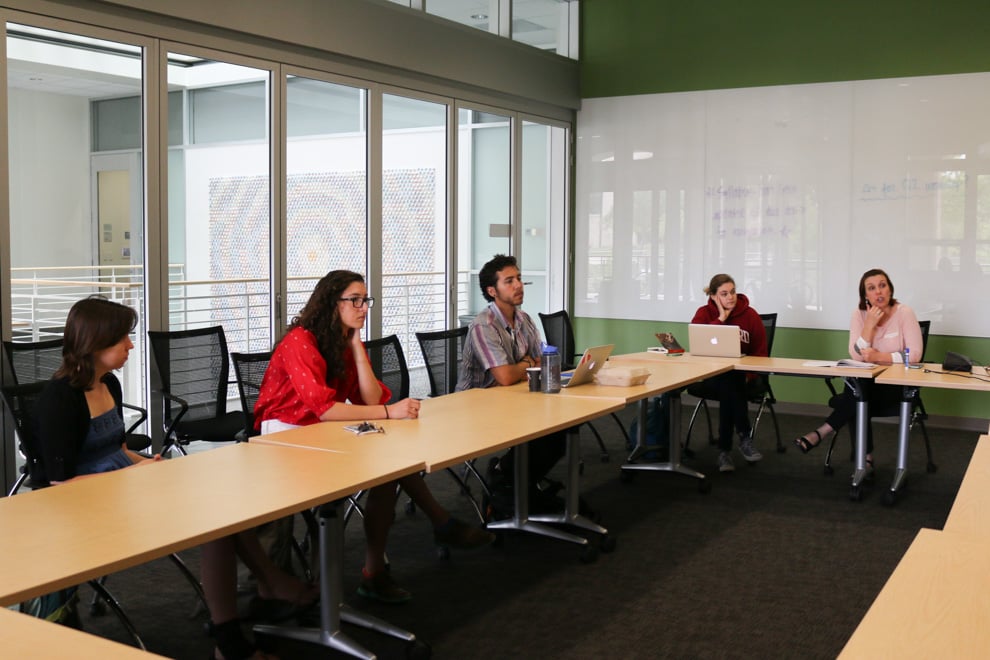EARTHSYS 200: “Sustaining Action: Research, Analysis, and Writing for the Public” provides a unique writing opportunity for students, publishing their work in Sound Advice for a Green Earth (SAGE), an eco-advice column in the Stanford Alumni Magazine.
The course fulfills the Writing in the Major (WIM) requirement for the Earth Systems major. Students choose two questions submitted to SAGE and parse through research in search of answers, but the focus of the course is on conveying scientific information to a public audience. Class sessions feature lectures and workshops on writing skills, peer review of writing assignments and occasional visits from guest speakers skilled in science journalism.
Students learn to offer advice to the public in a way that is understandable, engaging and likely to move people to take action.
“In studying environmental science there’s a lot of doom-and-gloom because we are learning about all the problems,” said Katie Phillips, the instructor of the class and a lecturer in the Earth Systems Program. “There’s a really big focus on trying to find positive stories, trying to find reasons for hope… we want people reading [students’ answers] to feel empowered.”
Readers can submit questions for the class online through SAGE.
The questions submitted cover a range of technical issues, such as whether the carbon footprint of producing an electric car exceeds that of a gas car to the more relatable of how to build an effective composter. Students choose the questions that interest them most, conduct research and deliver answers to their non-technical audience.
Riya Mehta ’18 researched the carbon footprint of the average American wedding and ways to make weddings more eco-friendly.
“[I try] to make sure I emphasize that planning an eco-friendly wedding does not mean that the wedding is not going to be as fun or as beautiful, and it’s probably going to be cheaper and more unique and more creative,” Mehta said.
Students learn techniques such as incorporating narratives, framing issues to emphasize solutions and incorporating and conducting interviews. According to Phillips, guest speakers including Thomas Hayden, professor of practice in Earth Systems Communication, science journalist, and previous instructor for the course, provide their expertise. Other speakers have included Emily Polk, lecturer in the Program for Writing and Rhetoric, and Miles Traer Ph.D. ’14, lecturer in Earth Systems.
The take-away from the course for students is improving their communication with the public.
“I am really interested in environmental communication and education so I’m figuring out how to put complex ideas that require calculations and research into simpler terms,” said Lauren Gibson ’17. “Trying to figure out how to do that is helpful not only in writing, but also in talking to people about big environmental issues that are harder to understand.”
According to Phillips, each student enrolled is interested in environmental communication and bridging the gap between scientists and the public.
“I’m passionate about having more people exist at the intersection between science and policy, science communities and non-science communities, because I think there is often a disconnect between the two,” Mehta said. “This class is really helping me learn how to communicate science to people who aren’t scientists, so I’m really grateful for that.”
Contact Miguel Samano at msamano ‘at’ stanford.edu.
